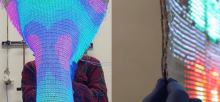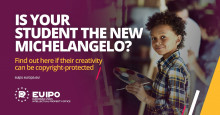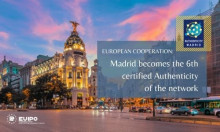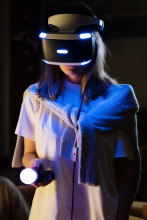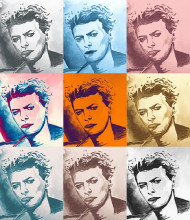IP in the news
Teachers and students in the EU get the answers to their copyright questions
New FAQs on copyright for teachers: The EUIPO Observatory has launched a new web page to guide European teachers and students on their copyright journey
The world of education has undergone profound changes in the past decade, particularly when it comes to online teaching practices. The increased digitalisation of this sector has been further accelerated due to the COVID-19 pandemic. New opportunities and challenges have created legal uncertainty in the educational community about the resources they can or cannot use in day-to-day educational practice.
Application for WIPO's Global Awards program
WIPO's Global Awards program recognizes exceptional enterprises and individuals using intellectual property (IP) to make a positive impact - both at home and beyond their own borders.
The Global Awards program is rooted in WIPO’s mission to ensure a world where innovation and creativity from anywhere is supported by intellectual property for the good of everyone. The awards recognize and support those whose skills contribute to progress and improve other people’s lives.
Madrid became the sixth certified ‘Authenticity’ of the European Network of Authenticities
On 29 December 2021, under the framework of the European Cooperation Project (ECP8) ‘European Network of Authenticities’, the city of Madrid (Spain) became the sixth certified ‘Authenticity’ of the network, following the Authenticities of Thessaloniki, Sofia, Plovdiv, Mykonos and Banská Bystrica.
Following an agreement signed between the Spanish Patent and Trademark Office and the Municipality of Madrid, a series of IP-related awareness-raising activities will take place locally over the next two years in the newly certified Authenticity.
What is the metaverse and why everybody talks about it?
About the debate on recipe plagiarism
Washington (AFP) – Pastry chef Nick Malgieri was scrolling through a food blog when he came upon a recipe for panettone, a puffy sweet bread that the author said conjured up fond memories of Christmases spent with his Italian grandmother. But it quickly became clear that the instructions were all too familiar. "I started reading the recipe and I said, 'This is my recipe!'" he recalled in an interview with AFP.
Bowie’s legacy was not the only one sold recently
Negotiations between Bowie’s heirs and Warner Chappel Music had already started last year, but finally concluded this January, with Warner acquiring the recording catalogue of the artist. The deal is worth a total amount of 250 million US dollar and includes the songwriting catalogue from 1968 to 2016, year of the author’s death.
What Happens When a Photocopy Machine Becomes an Art Tool?
Decades before computer programs and smartphone apps made digital manipulation commonplace, the photocopy machine offered novel ways to transform images.
When it first came about, this technology was truly groundbreaking. It wasn’t just offices who loved photocopiers; artists soon started to make use of innovative techniques in a genre which has come to be known as photocopy art, xerox art or electrographic art.
Taste the TV: Japan invents lickable screen
Batteries made from recycled face masks
The low-cost, disposable batteries can be used for household appliances such as clocks and lamps
The global population has been using more than 130 billion masks every month during the COVID-19 pandemic. And when these masks are thrown away, they create hundreds of tonnes of polymer waste. This waste is difficult to recycle and emits toxic chemicals if burnt.
